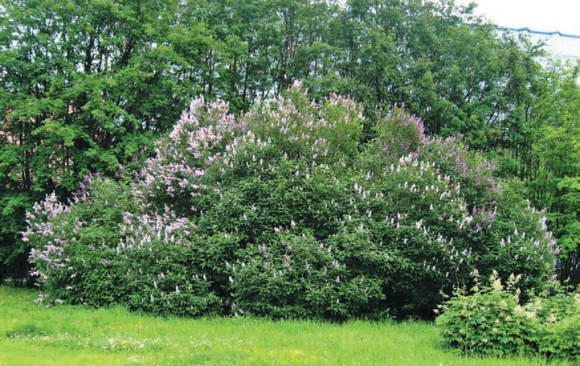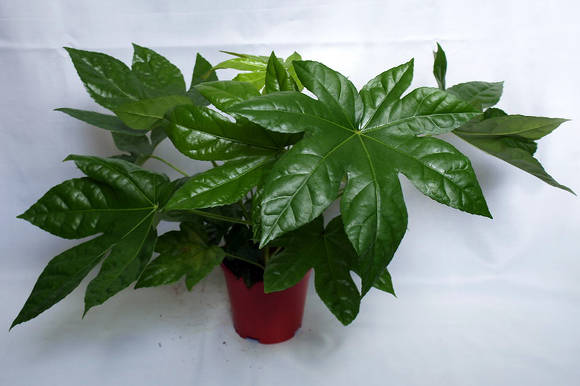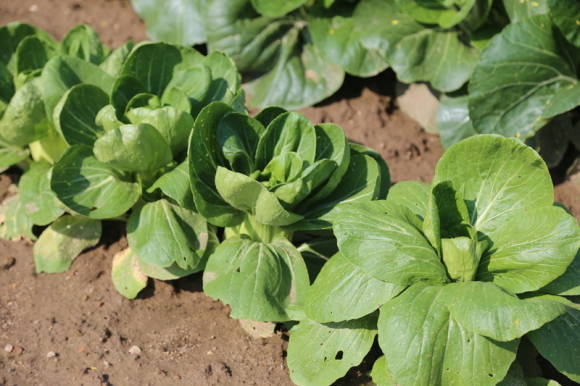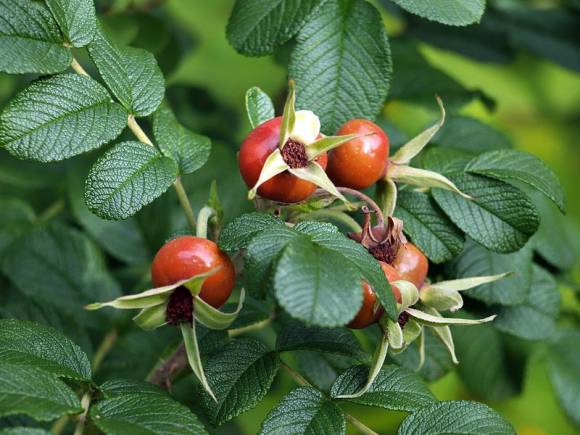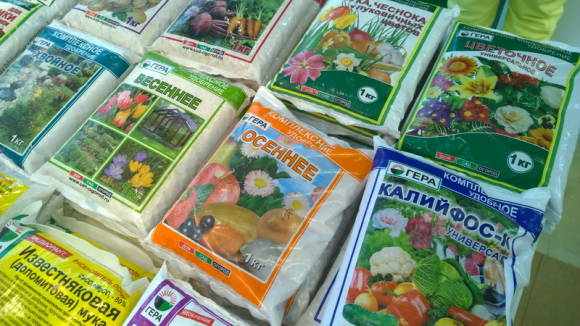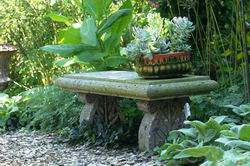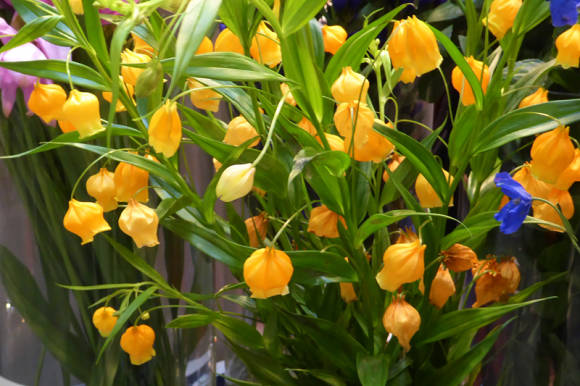Chrysanthemum time
The name "chrysanthemum" comes from the Greek words chrysos (gold) and anthemos (flower), that is, a golden flower. And this name chrysanthemum received not by chance, because initially people paid attention to the species with yellow flowers, and only centuries later, as a result of long selection and selection with the involvement of other species, acquired a modern range of colors and the most diverse forms.

The genus of chrysanthemums is very ancient; East Asia is considered their homeland. Chrysanthemums were grown in China over 2,500 years ago. Archaeologists find images of these plants on fragments of pottery, in patterns of oriental porcelain, and even on old coins.
Chrysanthemum came to Europe in the 17th century. The exact date is even known - 1676, when the Dutchman Reede brought this plant to England. And in 1789, Captain Pierre Blanchard brought her to France, to Marseille. Gardeners did not immediately pay attention to the "foreigner": after all, the flowers they brought were not at all similar to those beautiful, luxurious varieties that we know and see today - they were the simplest, resembled a large chamomile.
 |  |
But at the beginning of the 19th century, a gardener from Toulouse Berne began to breed chrysanthemums from seeds and received several new, beautifully colored specimens. Following him, other gardeners began to deal with chrysanthemums, and already in the 50s about 300 varieties of them were grown - they differed not only in color, but also in shape. Today, this flower has become the most beautiful and beloved of winter flowers. Chrysanthemum exhibitions are held in London and Paris, in many cities of Germany, where they pay a lot of money for the most bizarre, original flowers. Flower growers were not happy with the fact that chrysanthemums bloom in late autumn. And now, already in our time, scientists have managed in artificial conditions - either by shortening the daylight hours for plants, then by lengthening it - to make chrysanthemums bloom at any time of the year - so that they always please us.
In Japan, chrysanthemums are universally loved: they are bred everywhere, creating more and more new varieties. Previously, the image of a chrysanthemum was considered sacred, and only members of the imperial house could wear it on clothes - the emperor's emblem was a chrysanthemum with six petals. The chrysanthemum motif was widely used for kimonos, in ritual and secular clothing, in the costumes of the Noh theater. Very often in the East and in Japan, decoration was not just a decoration, but a symbol of the season - for example, a plum flower corresponded to winter, and a chrysanthemum - to autumn. To this day, it is believed that these plants have magical powers, in particular, chrysanthemum prolongs a person's life, and whoever drank dew from chrysanthemum petals remains forever young. This flower is associated with one of the most beloved holidays in Japan - the Chrysanthemum Festival.
In China, this flower is loved and revered no less than in Japan. The ninth month of the Chinese year was even named after her.
Chrysanthemum healing
Since ancient times, chrysanthemum has been used in China as a medicinal plant. In this country, the custom has been preserved to make an infusion of flowers, stems and leaves of chrysanthemum. The infusion is stored for a whole year and is served on the table the next year on the 9th day of the 9th month. The Chinese believe that a flower plucked on the ninth day of this month has a special, magical power and can be used to prepare a wonderful remedy that preserves eternal youth. Chrysanthemum was considered one of the four Chinese "noble symbols" (along with bamboo, plum and orchid) and therefore the cultivation of chrysanthemums was prohibited in the garden of a person of noble birth.
To prevent diseases, there was a rite of wrapping flowers in cotton cloth, and after the scent of chrysanthemums has saturated it, wipe the body.
But it should be said right away that when mentioning the numerous recipes, one should not forget that we can talk about completely different types of chrysanthemums, and not at all about garden varieties.In addition, even ordinary tansy and maiden feverfew may appear in old editions called chrysanthemum. Therefore, we will only mention the Asian species here.

Flowers are used under the name Yu Hua chrysanthemum mulberry (Chrysanthemummorifolium) in accordance with the views of traditional Chinese medicine, this raw material is preferably used in the fall. The raw material contains flavonoids, sterols, essential oil, which includes mono- and sesquiterpenes. Of the chemical elements, calcium, sodium, phosphorus (0.5%), iron (1.5%), silicon, potassium (2%) and about 0.5% phosphorus are especially abundant. Moreover, silicon is chemically bound with other natural plant compounds - pectin and phospholipids, and it is in this bound form that it is best absorbed by the body. Betaine and choline have also been found.
Flowers are harvested when they have just blossomed, but there are no signs of wilting yet. Unlike our practice of hiding raw materials from direct sunlight, they are dried in the sun.
It is prescribed for chills, headaches, liver diseases, especially with its insufficient function, as well as for lung diseases. The daily dose is 3-15 g of raw materials in the form of a decoction, powder or other specific drug.

Ye Ju Hua is considered more effective - chrysanthemum indian (Chrysanthemumindica), which is used for poisoning and associated digestive disorders. The raw material contains triterpenic acids, flavonoids (mainly apigenin and luteolin derivatives), sterols, chlorogenic acid and an essential oil containing sesquiterpenes, germacrene derivatives.
The flowers and leaves of Indian chrysanthemum in many countries, primarily in traditional Chinese medicine, were used for carbuncles, malaria, alcoholism, migraines, stomach diseases, and the roots - as a laxative.
Outwardly, they are used for eye diseases (redness, excessive tearfulness, edema) and skin diseases. Inflammation, irritation and swelling are reduced thanks to the flavonoids contained.
Prepare in this case as follows - the flowers are poured with boiling water, brought to a boil, insisted for 3 minutes, filtered.
Chrysanthemum petals are used as an aromatic agent with anti-inflammatory and mild sedative effects.
Modern research by Chinese scientists has confirmed the anti-inflammatory, antimicrobial, immunomodulatory effects of flowers. Besides, in vitro found anti-cancer activity against liver carcinoma.

In inflorescences and leaves of edible chrysanthemum topped (Chrysanthemumcoronarium) quite a lot of flavonoids (mainly apigenin). There are much more of them than in such medicinal plants as lemon balm, peppermint and mountaineer. Flowers and leaves contain sesquiterpene compounds and sulfur compounds. The aerial part of the plant contains essential oils and alkaloids (for example, stachydrine, which is also found in lemongrass). Now this chrysanthemum belongs to the genus gold flower called gold flower crowned (Glebionis coronaria).
Doctors recommend using this chrysanthemum for the prevention of cardiovascular diseases and as a mild laxative. Some biologically active substances contained in the plant thin the blood well, that is, they are useful for thrombophlebitis. It is recommended for atherosclerosis and hypertension to eliminate such unpleasant symptoms as dizziness, headache and insomnia. As a medicinal plant, chrysanthemum is used medicinally to treat radiation sickness.
Chinese and Japanese studies have shown that chrysanthemum preparations are very effective in hypertension, especially when combined with honeysuckle preparations.
Rinsing with infusion of chrysanthemum leaves and flowers is quite effective as an antiseptic for sore throat.
In case of a cold, a napkin moistened with infusion can be put on the forehead and, thanks to this simple technique, reduce the temperature.
Outwardly, an infusion of leaves is applied for problem skin, as well as steamed leaves are used as a compress on boils and pimples.
The European relative of chrysanthemum is the common meadow plant, common tansy. (Tanacetum vulgare)... One of its outdated Latin names even sounds like common chrysanthemum (Chrysanthemum vulgare)... It is widely used in European and Russian medicine. But this is already a topic for a separate article.

